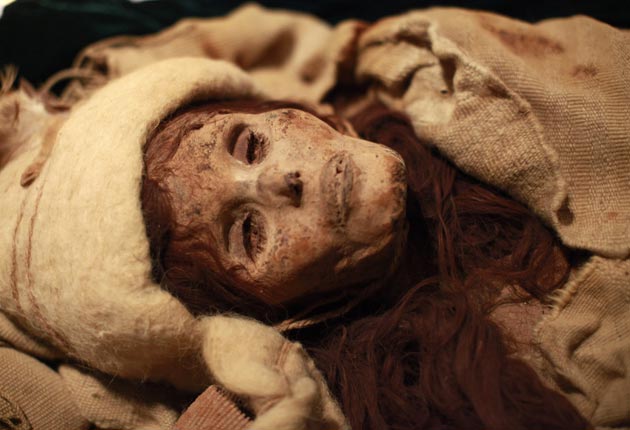Mystery of the mummy's Chinese travel ban

Your support helps us to tell the story
From reproductive rights to climate change to Big Tech, The Independent is on the ground when the story is developing. Whether it's investigating the financials of Elon Musk's pro-Trump PAC or producing our latest documentary, 'The A Word', which shines a light on the American women fighting for reproductive rights, we know how important it is to parse out the facts from the messaging.
At such a critical moment in US history, we need reporters on the ground. Your donation allows us to keep sending journalists to speak to both sides of the story.
The Independent is trusted by Americans across the entire political spectrum. And unlike many other quality news outlets, we choose not to lock Americans out of our reporting and analysis with paywalls. We believe quality journalism should be available to everyone, paid for by those who can afford it.
Your support makes all the difference.For her advanced years, she looks remarkable. Despite nearing the ripe old age of 4,000, long eyelashes still frame her half-open eyes and hair tumbles down to her remarkably well-preserved shoulders.
But the opportunity for new audiences in the United States to view the "Beauty of Xiaohe" – a near perfectly preserved mummy from an inhospitable part of western China – has been dealt a blow after it was pulled from an exhibition following a sudden call from the Chinese authorities on the eve of opening. The reason for pulling the mummy and other artefacts from the show remained unclear yesterday (Chinese officials were on New Year holiday) but there were suggestions that the realities of modern Chinese politics may have had a part to play.
The mummy was recovered from China's Tarim Basin, in Xinjiang province. But her Caucasian features raised the prospect that the region's inhabitants were European settlers.
It raises the question about who first settled in Xinjiang and for how long the oil-rich region has been part of China. The questions are important – most notably for the Chinese authorities who face an intermittent separatist movement of nationalist Uighurs, a Turkic-speaking Muslim people who number nine million in Xinjiang.
The government-approved story of China's first contact with the West dates back to 200BC when China's emperor Wu Di wanted to establish an alliance with the West against the marauding Huns, then based in Mongolia. However, the discovery of the mummies suggests that Caucasians were settled in a part of China thousands of years before Wu Di: the notion that they arrived in Xinjiang before the first East Asians is truly explosive.
Xinjiang is dominated by the Uighurs, who resent what they see as intrusion by the Han Chinese. The tensions which have spilled over into violent clashes in recent years.
Whatever the reason for the Chinese decision, it has caused great disappointment at the Pennsylvania museum where the "Secrets of the Silk Road" were due to go on show after successful exhibitions in California and Texas without major reproductions.
"It's going to be the rebirth of this museum," Victor Mair, a professor of Chinese language and literature, told the Associated Press last month. "It's going to put it back on the map."
Professor Mair declined to comment on the current controversy.
Join our commenting forum
Join thought-provoking conversations, follow other Independent readers and see their replies
Comments